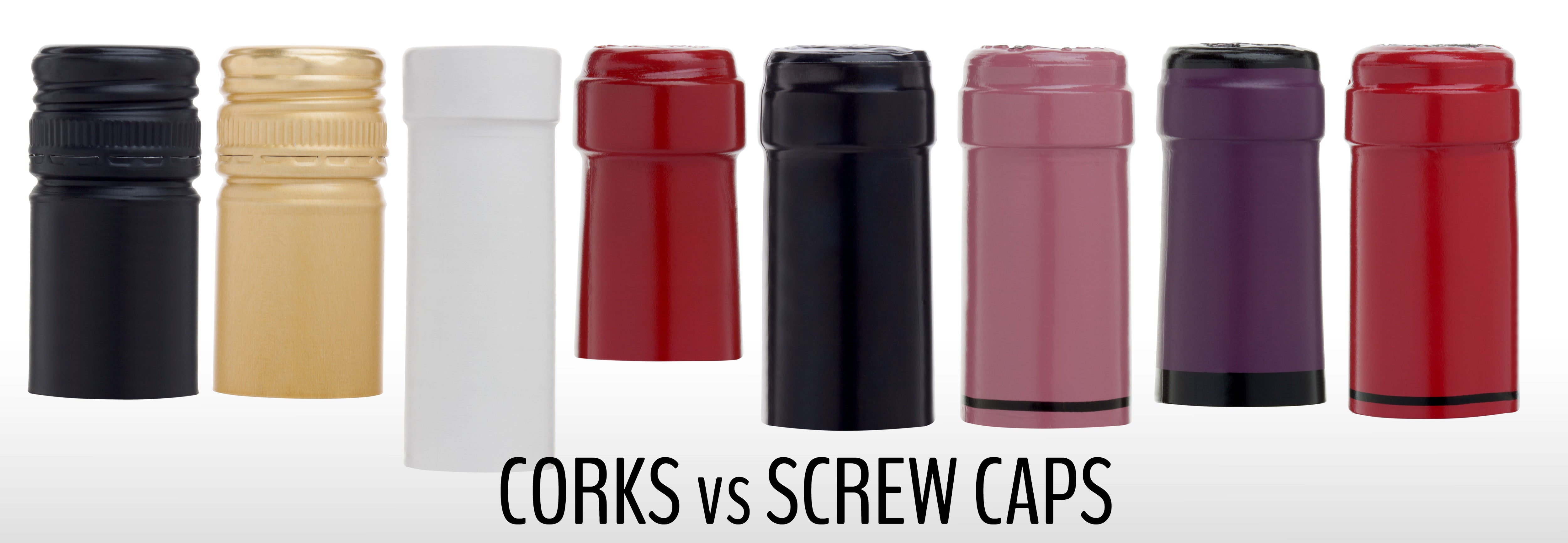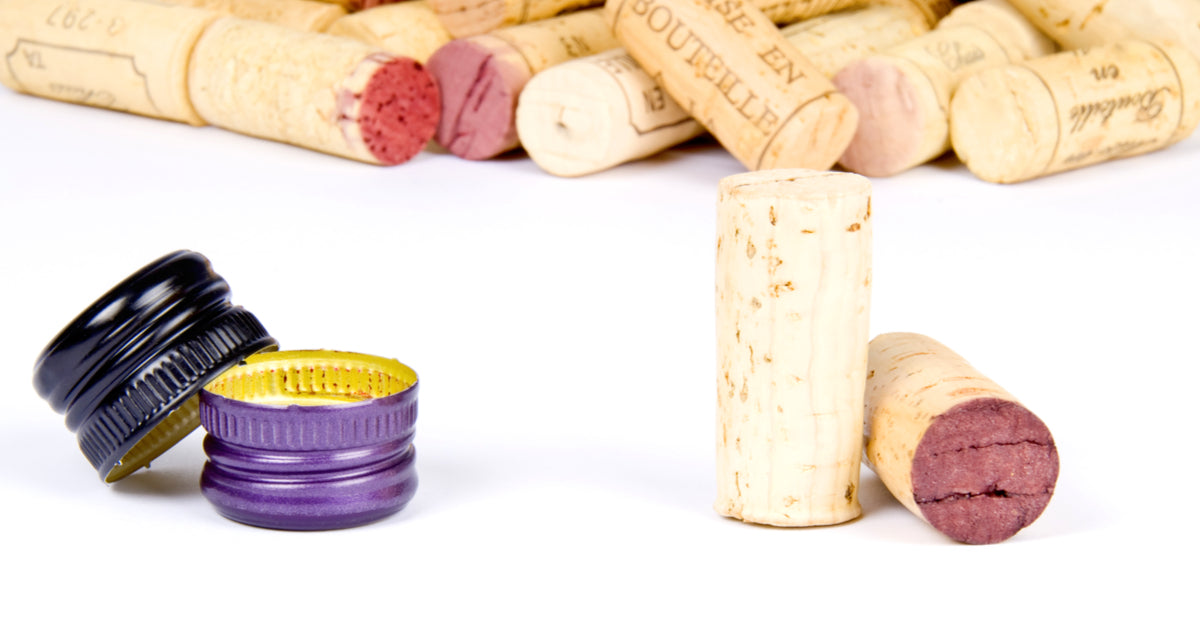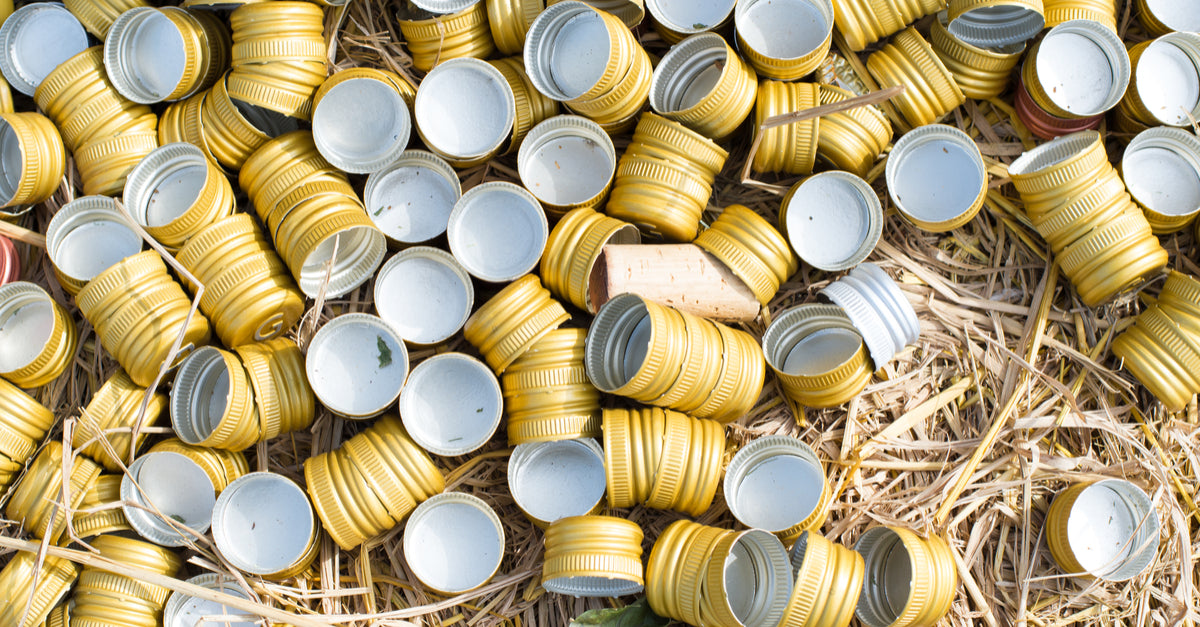Your Cart is Empty
- Christmas
- Hanukkah
- Anniversary
- Birthday
- Wine Gifts
- Wine Clubs
- Holidays
- Corporate
- Deals

From time immemorial the uncorking of a bottle of wine has marked the beginning of something memorable. It’s been a long-standing tradition in countless homes to commemorate any special occasion with the iconic pop! However romantic their appeal, recent times have witnessed a dramatic switch from corks to screw caps, which are increasingly being used to adorn the tops of many a wine bottle. This shift has spurned wine lovers and sommeliers alike to ponder whether what’s on the outside really makes an impact on what’s on the inside.

With the cork vs screw cap debate causing quite a stir in the wine drinking community, we decided to take a dive deeper and do a little digging ourselves.
Myth vs reality
For many, the cork is an indispensable component to any bottle of wine. It’s a part of the ritual and tradition of wine drinking that has been around for decades. This sense of ceremony around opening a bottle of wine has caused the cork to be highly favoured and subsequently associated with wines of superior quality. On the contrary, even though screw caps have been known to seal wine bottles since the late 1950’s, their association to value-oriented or low-quality bottles of wine has plagued for decades. As widespread as this notion might be, screw caps are now being adopted by high-end wine makers all over the world, proving that their use in sealing a bottle of wine has no bearing on the quality and nature of its contents.
Sustainability

The cork is often lauded for the role it plays in conservation efforts and preserving the traditional cork oak landscape- which without cork harvesting would lose their economic value and could end up abandoned. Apart from being completely degradable and environmentally friendly, it protects the ecosystem by mitigating the issues of climate change and loss of biodiversity.
However, the screw cap which isn’t manufactured from bio-degradable substances, is still recyclable to a great extent. With a fair share of opened screw caps being diverted back to recycling, this option presents itself as a promising and sustainable alternative that will see a huge increase in consumption by wine-makers.
Cost
Even with a wave of supporters backing corks, the price tag of $0.50 a piece is making it a tall order for wine-makers to adapt it into their finished product. This is especially true in the case of those that manufacture wines in the $10 - $25 price segment. Screw caps have saved the day for many of these wine makers, as it’s an effective way of sealing a bottle at a fraction of the cost. However, despite their steep price, a lot of high-end wine makers continue to top their wines with a cork to retain the authenticity and charm of their offering.
Ease of use
We have all at some point of time in our lives, been a victim of the cork screw debacle where we have spent an embarrassingly long amount time trying to uncork a bottle of wine. No matter how hard you tug at it, the cork at times refuses to budge or worse still, crumbles into pieces and lands in the wine, much to your despair. This has been a great stimulant for many a customer to switch to screw caps especially when it comes to their budget wine. Additionally, screw caps make it easier for the wine to be transported and stored as they are completely spill proof and compact. With considerably less muscle work and drama involved, the screw cap definitely has our votes for its ease of use.
Quality control

With Cork Taint being the leading cause of spoilage in 5-10% of wines on merchant shelves, corks are increasingly being replaced by its screw cap counterpart. Screw caps have reported a much lesser percentage of spoilage of their contents which range from 0.2-0.5%. The wine reacts with an ingredient called Trichloroanisole, which is a substance that’s formed when the corks are sanitized with chlorine. This causes mold to form on some corks causing a musty or moldy flavor that can negatively impact the taste of the wine. Screw caps on the other hand, protect against contamination and preserve the aromas, flavors, and freshness of wine. In many cases it may not improve the wine, but it does offer a better guarantee of keeping it in good condition.
Cork vs screw cap - What is the best way to seal a bottle?
Even with the odds stacked favourably on either contraption, during a comparison of their various characteristics, we can safely claim that both the screw cap and cork have very distinct and defined roles when it comes to sealing a bottle of wine.
One of the primary reasons corks are still widely used in the wine industry owes itself to the fact that it lends optimal “breathability” to the wines. The elastic structure of the material and body composition of 90% air allows it to adapt perfectly to the bottle letting in just the right amount of air that helps to suppress the tannins in the wine and give it a velvety smooth texture as it ages. Even though the natural element leaves rooms for inconsistency in aging wines, it is still the ideal choice for more complex and full-bodied wines such as chardonnays and reds, including cabernets and blends of zinfandel, merlot and petite sirah. The screw caps however stay true to their nature by firmly keeping the air out, and may not always be the ideal choice for wines that need to be aged. This is not to say that screw caps are all bad. Its biggest advantage continues to be that it does not alter the contents of the bottle, allowing only the liquid itself to improve. Additionally, there are screw caps available in the market to emulate “breath” in a controlled way, making it a superior albeit pricey alternative to corks. Due to their many natures, winemakers prefer screw caps for white wines and reds meant to be drunk young. The screw cap keeps the bottle sealed and does not allow oxygen to enter the bottle ensuring that the wine remains crisp and well-preserved.
A fair critique of the cork vs screw cap dialogue leads us to the conclusion that in the present day, a wine's seal-type is no longer an indicator of its quality. A connoisseur must simply continue to work his way through the good stuff to find the ones that strike a note with his palate. And more often than not it has very little do with the bottles topper.
Author: Natasha Pradeep